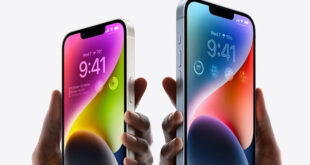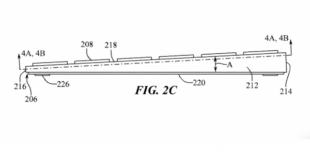
Unlike Android handset manufacturers, which sometimes deploy different SoCs in identically named products depending on the market, Apple has historically stuck with a unified iPhone design. In 2016, the company started using two different modems, one from Qualcomm, one from Intel. Apple has continued this practice with the iPhone X, and while the data is preliminary, evidence suggests that the Intel and Qualcomm modems still offer different performance. The ranking, however, may have changed.
A year ago, Qualcomm was the undisputed winner of the Intel-versus-Qualcomm silicon match-up. As the graph below illustrates, Intel’s XMM7360 could only keep pace with Qualcomm when signal strengths were very good. As signal strength fell, the gap between the two modems widened.
 The iPhone X has only been out for a few weeks, so initial data is low. The company releasing the comparison, SpeedSmart, acknowledges that current sample data is limited and not controlled for wireless connection strength or the LTE band being used. That said, the data on the iPhone X points the opposite direction from the iPhone 7:
The iPhone X has only been out for a few weeks, so initial data is low. The company releasing the comparison, SpeedSmart, acknowledges that current sample data is limited and not controlled for wireless connection strength or the LTE band being used. That said, the data on the iPhone X points the opposite direction from the iPhone 7:
On ATT, the gap is small; Intel is roughly 9 percent faster in download and 3 percent faster in uploads. On T-Mobile, Intel surges ahead by a comparative mile, with DL performance that’s 1.26x faster and uploads a whopping 1.46x faster. Now, as we’ve said, these figures could be tilted based on where their owners live — with the iPhone X having been in market for so little time, it’s entirely possible that a random initial distribution happens to favor one modem over another. But the T-Mobile performance differences, in particular, are large enough that it may make sense to try and preferentially find the Intel modem as opposed to the Qualcomm one. (Good luck if you try to do this, given Apple doesn’t exactly advertise them as two different versions of the same product.)
Qualcomm’s performance may be handicapped by Apple’s decision to disable certain features on the iPhone X, as BGR points out. Unlike many of its competitors, the iPhone X is limited to LTE-A (LTE Advanced) rather than Gigabit LTE. This was a deliberate design decision by Apple to ensure the Intel and Qualcomm chips ran equally fast, though it may have inadvertently disabled some features that decisively favor one baseband provider over the other on certain networks.
We’ll know more on this when the iPhone X has been in-market longer and put through its paces more rigorously. For now, unless you’re a T-Mobile customer, we’d say the difference between the two solutions is pretty small. It is possible, however, that these results will also vary depending on signal strength, which would flip an advantage back to Qualcomm.
Now read: PCMag’s Fastest Mobile Networks 2017
 #Bizwhiznetwork.com Innovation ΛI |Technology News
#Bizwhiznetwork.com Innovation ΛI |Technology News




